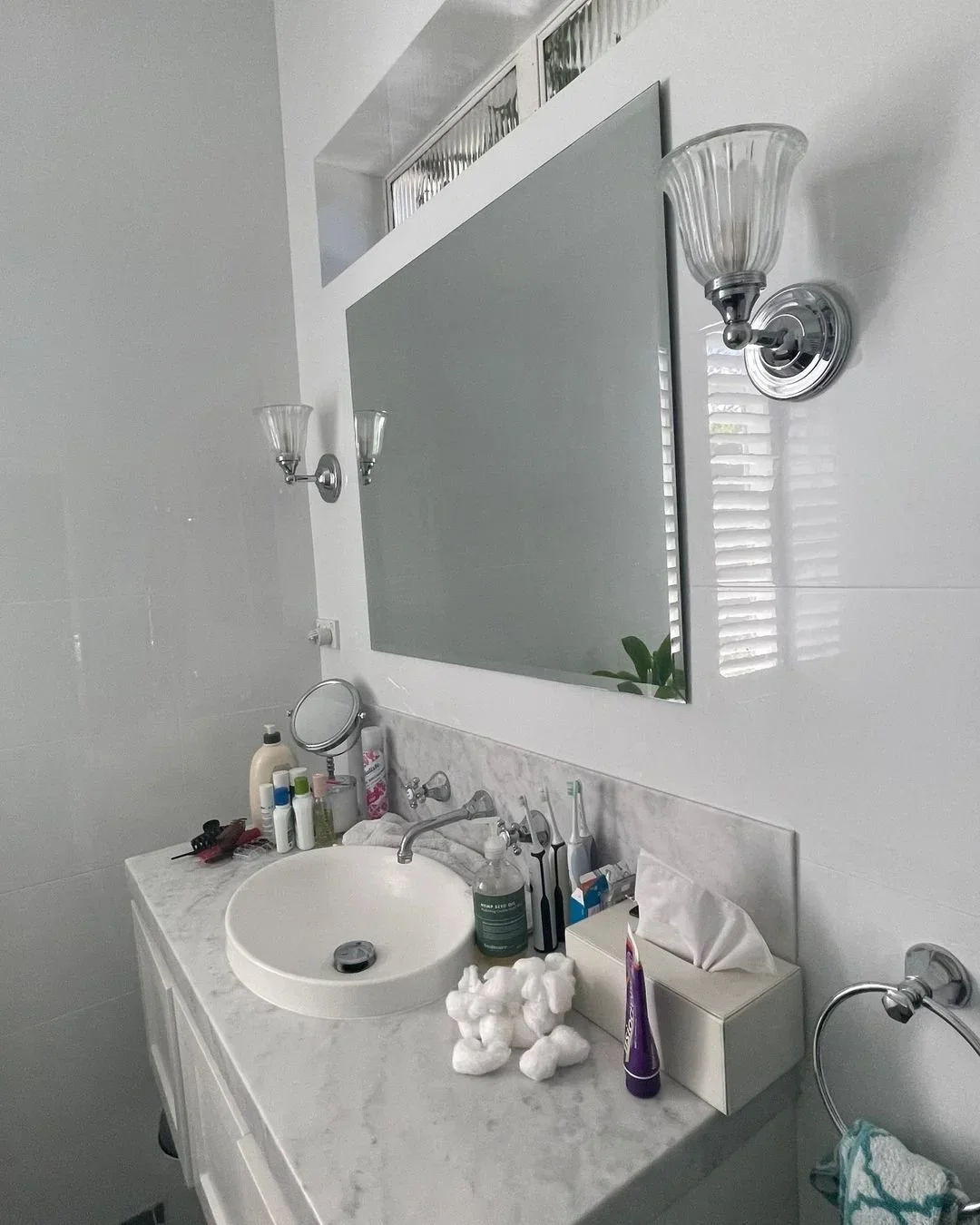The Year’s Trending Microcement Ideas From Real Interior Projects
As we start wrapping up 2025, it’s time to look back at the year’s X-Bond projects to see which trends are defining the way designers, builders, and home owners use microcement. From material pairings to strategic renovation ideas; the year’s standouts will spark plenty of inspiration for your next interior.
Here’s how X-Bond clients are setting the tone for 2026 — presenting the best microcement ideas from this year’s interior projects.
Learn more about X-Bond Microcement here.
Shower Skylights
In many of our most-loved X-Bond bathroom projects, skylights became a hero moment — letting in light, creating a calming spa-like ambience, and enhancing the sense of space. Designers used X-Bond to create fully continuous shower zones that felt minimalist yet immersive, achieving a tactile matte finish that interacts dynamically with light.
The X-Bond system is perfect for showers, offering seamless integration possibilities for floors, walls, and ceilings in wet areas — eliminating the visual distractions and clutter of tile grout.
While skylights used to be a niche luxury, they’ve now become a signature element in contemporary bathroom projects, and perhaps even a necessity; it’s a way to connect with the exterior while still protecting privacy, and is a feature you can work into an existing space for a hassle-free renovation.
Expect to see a lot more of them, because smart solutions to increasing natural light aren’t just a trend, but an essential requirement for many bathroom designs.
Travertine
Travertine has made a major resurgence, stepping into the spotlight as one of the most sought-after materials for interiors — in our X-Bond project calendar, it’s been a constant fixture this year. Travertine is honed from the earth, while X-Bond is hand-finished by artisans; together they represent a balance of nature and innovation.
Like microcement, with its seamless application and understated tactility, travertine balances organic texture with modern restraint. While the stone itself has long been associated with classic exterior architecture, recent years have seen a shift toward embracing travertine finishes in a wider range of design projects, from retail interiors to bathrooms.
When paired with microcement, the textural interplay is so compelling. The result is surfaces that feel minimalist yet full of character, nailing the balance of warmth and subtlety that has become a defining goal in modern interiors: textured but never busy.
Tile Resurfacing
Tiles themselves will always be popular, but when it comes to renovating an old tiled area, many clients are choosing to apply microcement over the top. It’s probably 2025’s most practical trend, fuelled by the growing demand for sustainability and convenience in renovations.
Instead of undertaking costly and waste-heavy tile demolitions, designers increasingly asked us to resurface existing tiled substrates with X-Bond, creating a fresh contemporary look while reducing construction impact.
Visually, this approach unlocks new creative directions. By applying microcement directly over old tiles, projects could transition from heavily gridded, busy surfaces to seamless walls and flooring that feel sculpted and architectural. The transformation is both visual and experiential: dated spaces gained a sense of continuity, with the absence of grout lines also making them easier to clean and maintain.
As budgets tighten and practical expectations rise, microcement overlays are set to remain a go-to strategy for transforming tiled spaces while maximising beauty and longevity.
Read More: Everything You Need To Know About Tile Resurfacing
Herringbone Timber Flooring
Proof that trends are cyclical, herringbone floorboards are back: elegant, rhythmic, and unexpectedly minimal when paired with today’s muted palettes and finishes like microcement.
Contemporary designers are still using herringbone for its geometry, but are leaning away from grandeur. A simple directional layout creates subtle movement across a space without overwhelming it.
In X-Bond projects, designers paired herringbone timber with seamless microcement walls. The appeal comes down to balance; herringbone carries connotations of traditional sophistication, but with less intensity than other ornate associations from classic eras. It’s textural without being “too much”, detailed but not overly decorative, and perfect for clients seeking interiors that feel truly timeless.
Even though minimalism is still in vogue, clients are moving away from hyper-sparse, flat, one-dimensional interiors. Much like microcement, herringbone provides a way to reintroduce craftsmanship — along with a bit of history — in a way that still feels fresh.
And so, the contrast between precision-laid timber and hand-finished microcement became one of our most surprising and successful material pairings of the year.
“Carved From Stone” Aesthetic
Some of our most viral hits this year — from Sculpt Adelaide to Hideaway House and the Sorrento Courtyard — are drenched floor to ceiling in X-Bond. The resulting spaces feel shaped and carved, rather than merely constructed, with seamless surfaces and integrated forms satisfying a rising interest in an elemental kind of luxury.
At the heart of the trend is a desire for sculptural scale. Microcement’s versatility and consistent finish across surfaces allows architectural details to merge seamlessly, creating the illusion of spaces carved directly from a single mass. This monolithic continuity actually softens the environment, as much about feeling as it is about aesthetics. Tactile surfaces with an absence of harsh transitions promotes a sense of stillness, responding directly to our collective craving for sanctuary-like spaces.
By layering microcement on microcement, you can turning anything into a refuge — from a simple powder room to a skin rejuvenation clinic.
Honourable Mention: Stainless Steel
At the new Misha flagship in Melbourne’s Emporium, metal is a striking counterpoint to X-Bond’s soft, mineral-based texture. Designers Want Studio really leaned into sleek, industrial touches to bring sharp contrasts to an otherwise earthy, monolithic space.
Metal’s reflective qualities also play beautifully against the X-Bond’s matte, tactile surface. The harsh shopping centre lighting moves through the store in more dynamic, intentional ways.
This brief represents a shift toward curated contrasts in contemporary commercial interiors. Not just functional commerce hubs anymore, retail boutiques are being treated as an extension of brand identity and an integral element of marketing.
Stainless steel’s enduring durability, paired with X-Bond’s seamless versatility, has made it a duo we’d love to keep seeing in commercial design — and one that promises longevity well beyond the trend cycle.















